Thoughts on Extended Depth of Field
With Don Williams' Microscopy Sequence
Rik Littlefield (email
rj.littlefield at computer.org)
Page last modified May 8, 2005
Introduction
At http://groups.yahoo.com/group/Microscope/message/24573,
Don Williams posted links to a sequence of microscope images that had
proved troublesome to extended-depth-of-field software. Those
links were http://www.science-info.org/pages/edfwill/499/
(for the images from CombineZ5 and Helicon Focus) and http://www.science-info.org/pages/edfwill/499/IMGS/
(for the series of 48 source images). Several followups were
posted, notably at http://groups.yahoo.com/group/Microscope/message/24579
where Rik Littlefield suggested that uncompressed images might work
better, and at http://groups.yahoo.com/group/Microscope/message/24585
where Alan Hadley suggested an alternative processing sequence with
CombineZ5.
The purpose of this page is to further analyze the source sequence and
suggest additional improvements to the processing sequence of CombineZ5
and the parameter settings of Helicon Focus 3.10.
Note: this page contains large images, totalling around 5 MB.
Depending on the speed of your Internet connection, you may wish to go
do something else while all of the images download. Once they are
cached by your browser, re-visiting the page will be significantly
faster.
The Source Sequence
Probably the best way to describe the source sequence is to illustrate
it. Here is an animated GIF showing all 48 frames of the source
sequence, reduced to 25% resolution, and played continuously at 5
frames per second.

Notice that the imagery consists of numerous stationary dark objects
that come into and leave focus, combined with an assortment of mobile
objects that are apparently freely swimming around in the field of view.
The stationary appearance of many objects, combined with the obvious
movement of others, suggests that automatic image alignment
(registration) may not
be a good idea, as it may easily attempt to align the moving objects,
to the detriment of the stationary ones.
We also see, despite the reduction to 25%, that nothing is rendered
really sharply
in any of these images. This suggests that the extended
depth-of-field software might benefit from using larger radii, or more
smoothing, or both, depending on the software's processing model.
Results With Various Parameters and Processing Steps
(Any of the non-animated images below can be clicked, to see the image
at higher resolution.)
Helicon Focus
The image below is the result of processing the source image sequence
with
Helicon Focus 3.10 using default parameters R=8, S=4. This image
shows an obvious mesh-like pattern around certain objects.
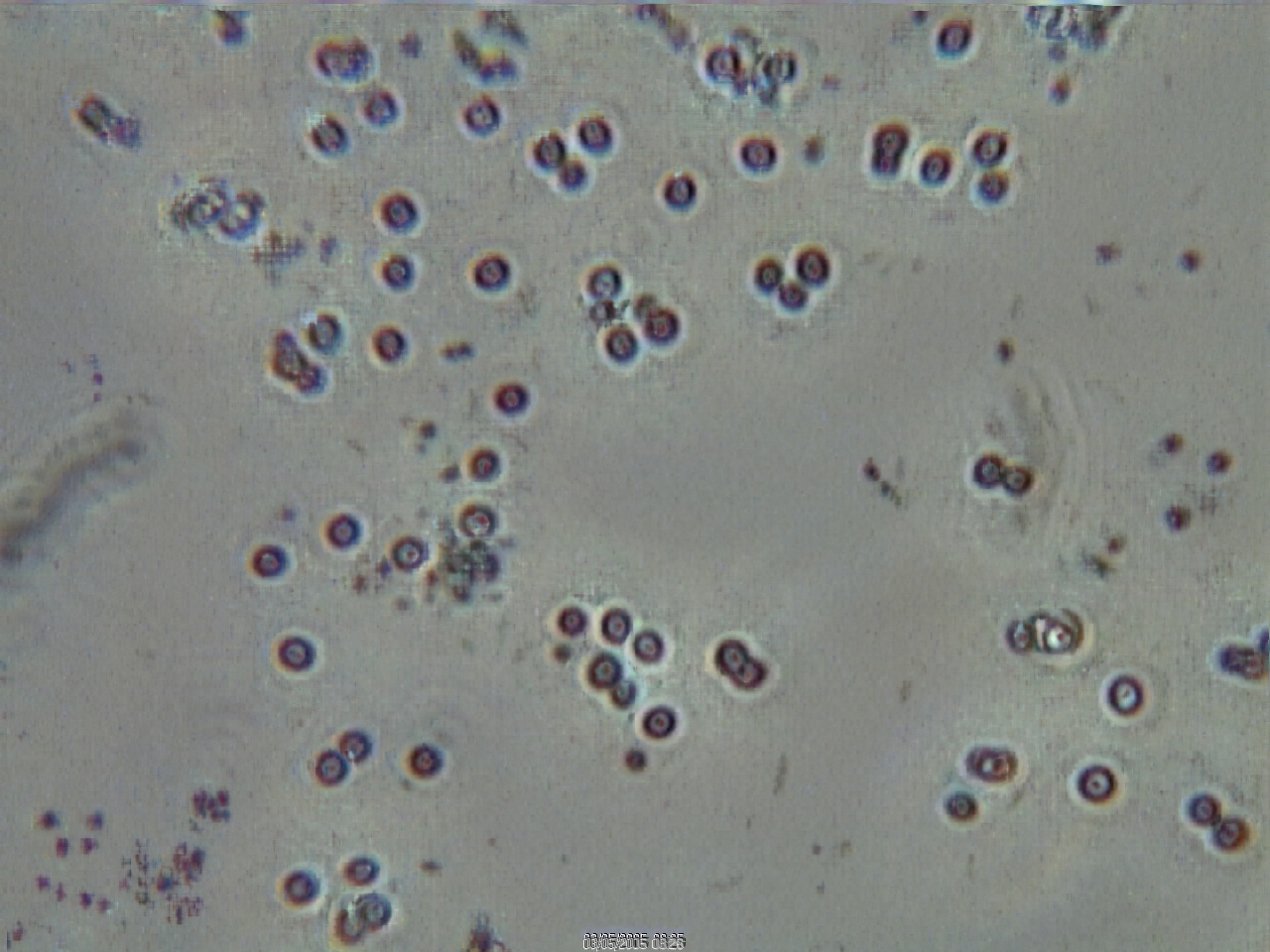
The image below here is also Helicon Focus, with default parameters except that
automatic alignment has been turned off. Notice that the
meshlike pattern has essentially disappeared. That
pattern was apparently due to enhancement of JPEG compression artifacts
that
became misaligned as a result of jitter in the registration process,
perhaps caused by the moving objects. Notice in both of these
images, that the random collection of dark spots at lower left is due
to selection of only a couple of different organisms, in different
places at different times, as they moved around the frame. (See
the animation.)
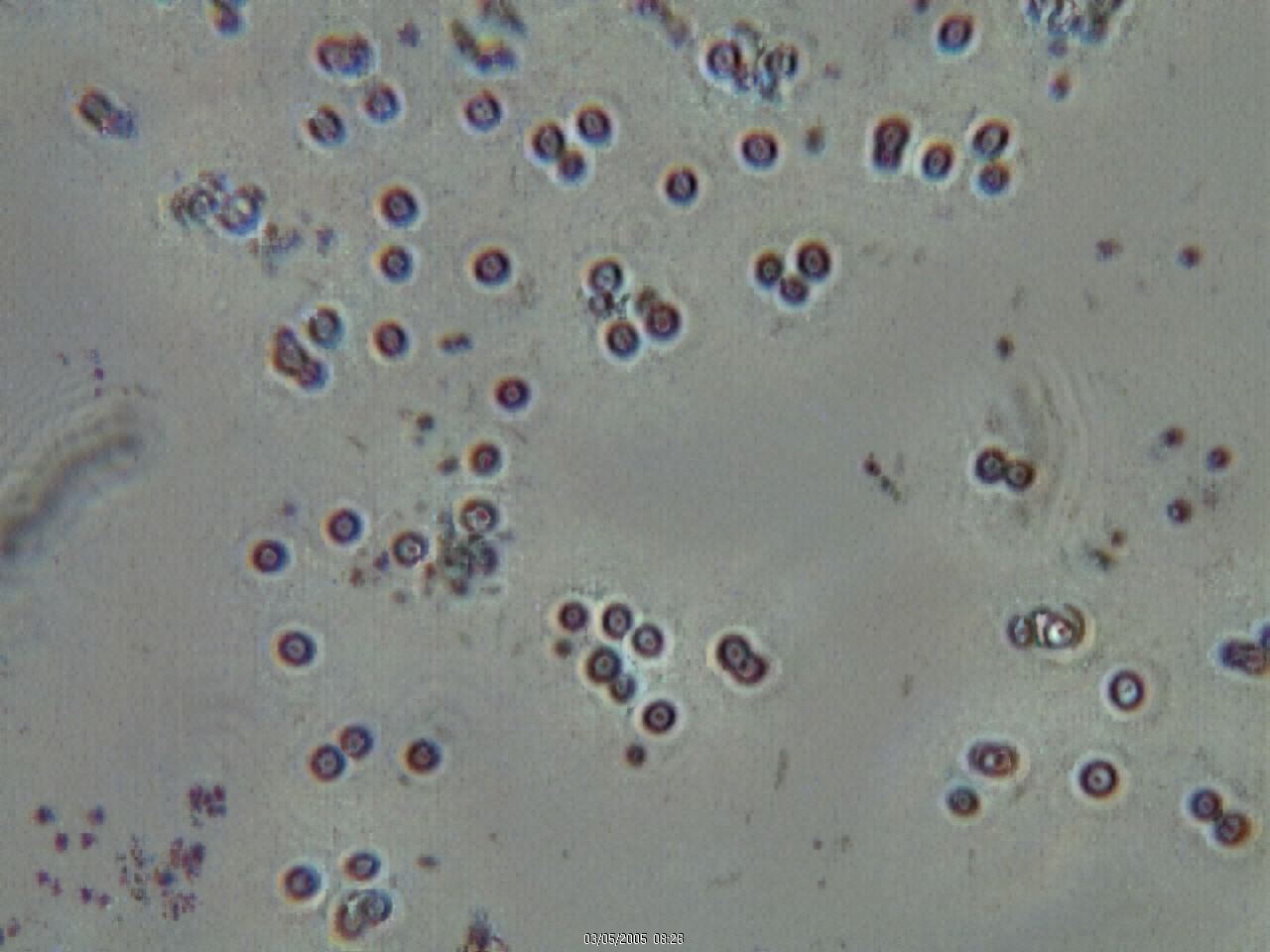
The Helicon Focus image can be improved further by judicious adjustment
of its processing parameters. Here is what happens when one
increases the radius of the focus and smoothing windows by selecting
R=10, S=6 instead of the default R=8, S=4. Notice that
pixellation and noise are further reduced, with no significant loss of
image detail.
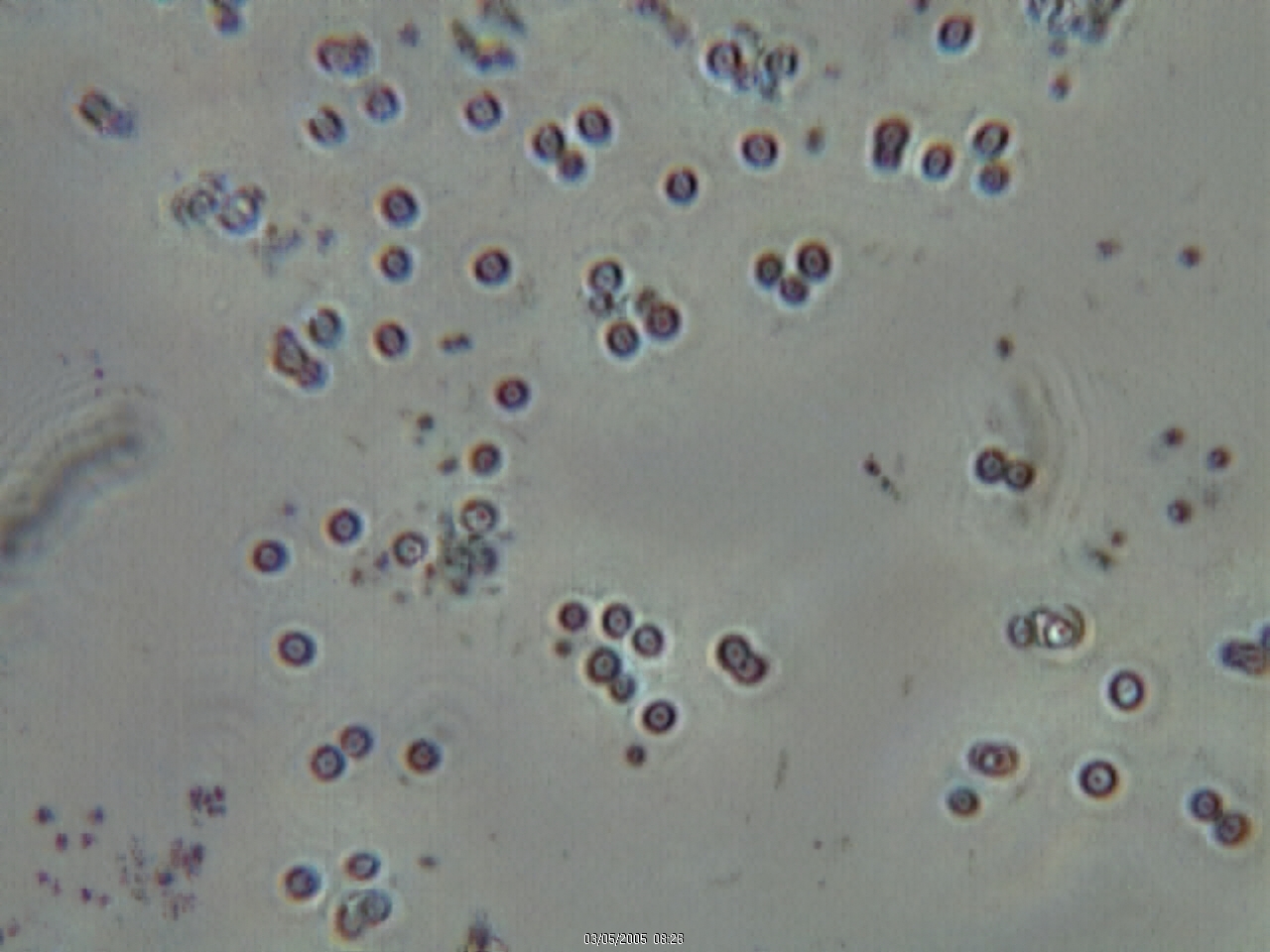
CombineZ5
Here are results of CombineZ5's default "Do Stack" macro. This
image exhibits significant "swirliness" in some areas, particularly
around some of the major stationary objects. This effect is often
reduced by increased smoothing of the depth map. Detailed
examination of the time tag, in the full-resolution image, shows that
image registration has also perhaps done a few pixels of inappropriate
shifting, but in this case (for unknown reasons) this did not cause
enhancement of the jpeg compression artifacts.
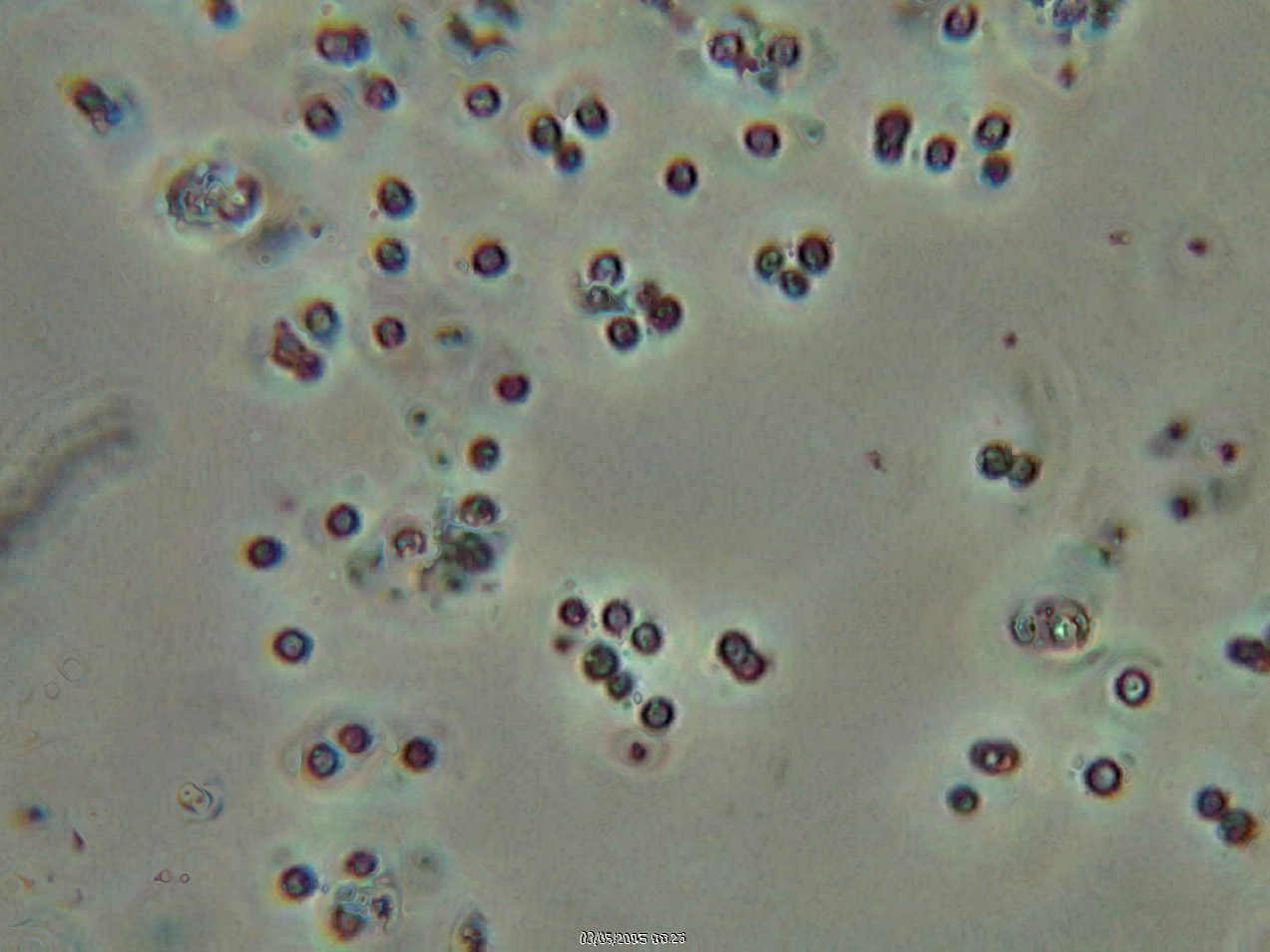
The image below is based on Alan Hadley's comments in http://groups.yahoo.com/group/Microscope/message/24585,
where he suggested to reduce to monochrome, average groups of 2 frames,
and then standard Do Stack.
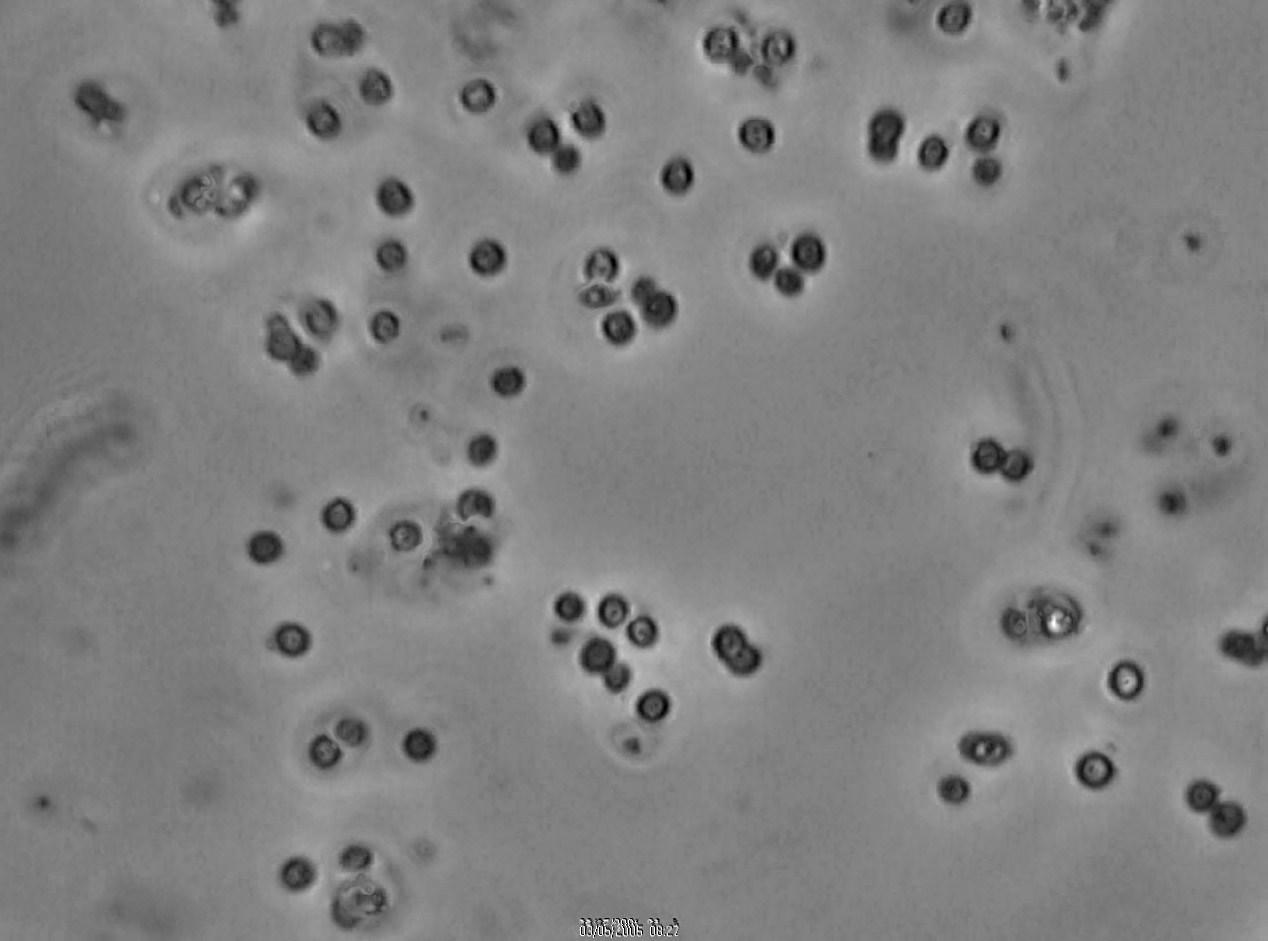
I have played around further with CombineZ5, but I have not been able
to significantly improve its output beyond Alan's suggestion. For
the record, here is what results from the following sequence:
Balance Colour and Brightness
Find Detail(50)
Remove Islands(5)
Fill Gaps
Create a Lowpass Filter(100,0)
Filter Depth Map
Copy Last Filter Output to Depthmap
Interpolated Output
Create a Highpass Filter(1000,750)
Filter Active Frame
This seems roughly comparable to Alan's suggestion, particularly given
the difference between any of these composite images and the reality
suggested by the animation of the source imagery.
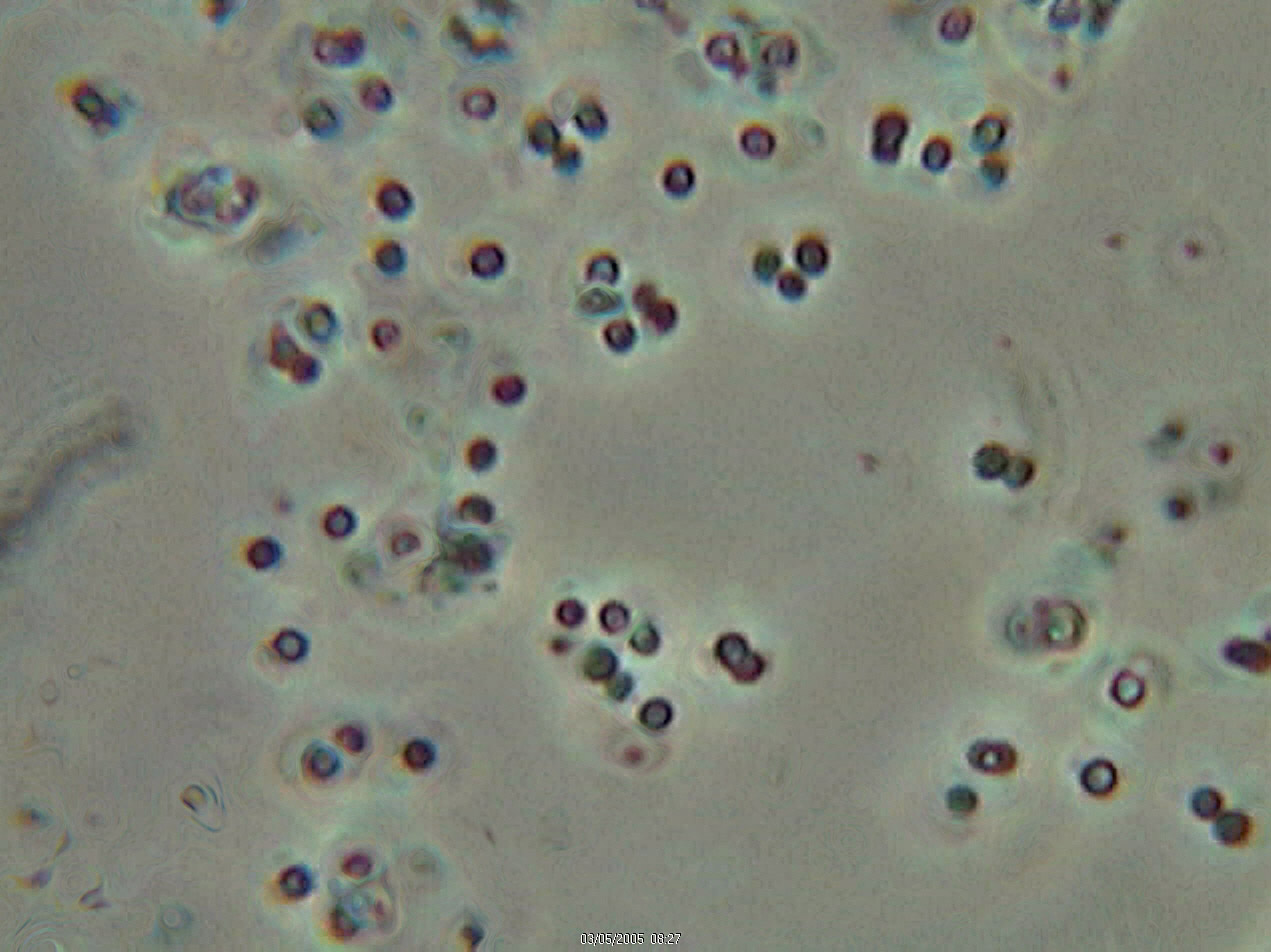
Direct Comparison
Following is a two-image animated comparison of the best results (so
far) from Helicon Focus (R=10, S=6, no autoadjustment) and CombineZ5
(Alan's sequence, as I understand it).
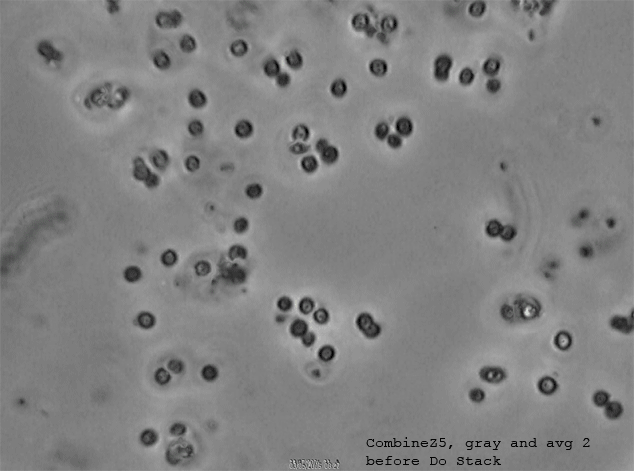
Summary and Interpretation
With tuning, both Helicon Focus and CombineZ5 are able to produce a
composite image that captures more content than any single source
frame. Neither of them works very well with default
parameters. For this particular stack, I would be inclined to
give the nod to Helicon Focus, after tuning (and based only on visual
appearance, not in-depth understanding of the source material).
However, neither
Helicon Focus nor CombineZ5 (in my opinion) produces a composite
image that conveys as much information as the low resolution
animation. Both of them are prone to artifacts. Clearly
much further development is required. It
would be a significant improvement for the stacking programs to
understand at least a little bit about diffraction, instead of blindly
assuming that sharp gradients imply focused detail.
Claims and Disclaims
The work presented here is unreviewed, unpublished documentation of
capabilities
and techniques developed by the author. It is intended for online
discussion and is subject to future edits in place. Please do not
reference
in publications; contact the author instead. Text copyright Rik
Littlefield, 2005.







